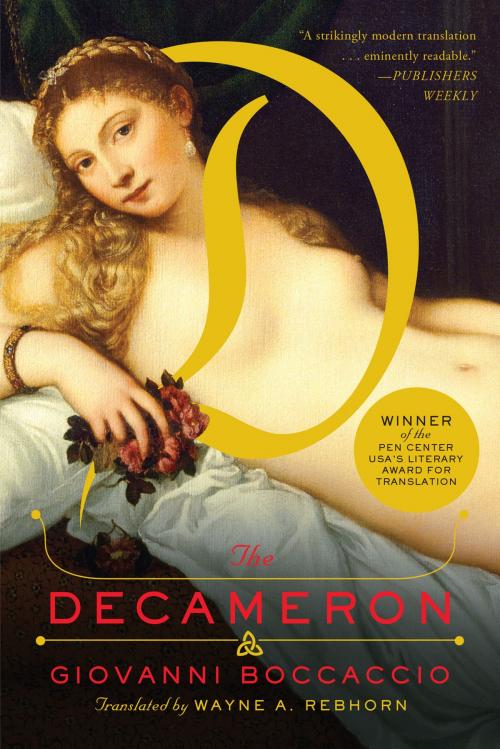| Author: | Giovanni Boccaccio | ISBN: | 9780393241280 |
| Publisher: | W. W. Norton & Company | Publication: | September 16, 2013 |
| Imprint: | W. W. Norton & Company | Language: | English |
| Author: | Giovanni Boccaccio |
| ISBN: | 9780393241280 |
| Publisher: | W. W. Norton & Company |
| Publication: | September 16, 2013 |
| Imprint: | W. W. Norton & Company |
| Language: | English |
“Rebhorn deserves our gratitude for an eminently persuasive translation. . . . I celebrate his accomplishment.”—Edith Grossman
The year is 1348. The Black Death has begun to ravage Europe. Ten young Florentines—seven women and three men—escape the plague-infested city and retreat to the countryside around Fiesole. At their leisure in this isolated and bucolic setting, they spend ten days telling each other stories—tales of romance, tragedy, comedy, and farce—one hundred in all. The result, called by one critic "the greatest short story collection of all time" (Leonard Barkan, Princeton University) is a rich and entertaining celebration of the medley of medieval life.
Witty, earthy, and filled with bawdy irreverence, the one hundred stories of The Decameron offer more than simple escapism; they are also a life-affirming balm for trying times. The Decameron is a joyously comic book that has earned its place in world literature not just because it makes us laugh, but more importantly because it shows us how essential laughter is to the human condition.
Published on the 700th anniversary of Boccaccio’s birth, Wayne A. Rebhorn's new translation of The Decameron introduces a generation of readers to this "rich late-medieval feast" in a "lively, contemporary, American-inflected English" (Stephen Greenblatt, Harvard University) even as it retains the distinctly medieval flavor of Boccaccio's rhetorically expressive prose.
An extensive introduction provides useful details about Boccaccio's historical and cultural milieu, the themes and particularities of the text, and the lines of influence flowing into and out of this towering monument of world literature.
“Rebhorn deserves our gratitude for an eminently persuasive translation. . . . I celebrate his accomplishment.”—Edith Grossman
The year is 1348. The Black Death has begun to ravage Europe. Ten young Florentines—seven women and three men—escape the plague-infested city and retreat to the countryside around Fiesole. At their leisure in this isolated and bucolic setting, they spend ten days telling each other stories—tales of romance, tragedy, comedy, and farce—one hundred in all. The result, called by one critic "the greatest short story collection of all time" (Leonard Barkan, Princeton University) is a rich and entertaining celebration of the medley of medieval life.
Witty, earthy, and filled with bawdy irreverence, the one hundred stories of The Decameron offer more than simple escapism; they are also a life-affirming balm for trying times. The Decameron is a joyously comic book that has earned its place in world literature not just because it makes us laugh, but more importantly because it shows us how essential laughter is to the human condition.
Published on the 700th anniversary of Boccaccio’s birth, Wayne A. Rebhorn's new translation of The Decameron introduces a generation of readers to this "rich late-medieval feast" in a "lively, contemporary, American-inflected English" (Stephen Greenblatt, Harvard University) even as it retains the distinctly medieval flavor of Boccaccio's rhetorically expressive prose.
An extensive introduction provides useful details about Boccaccio's historical and cultural milieu, the themes and particularities of the text, and the lines of influence flowing into and out of this towering monument of world literature.















